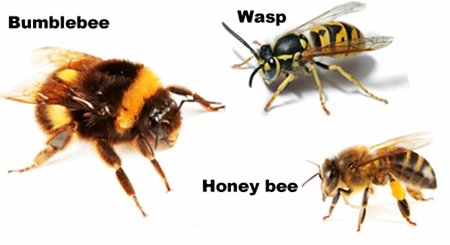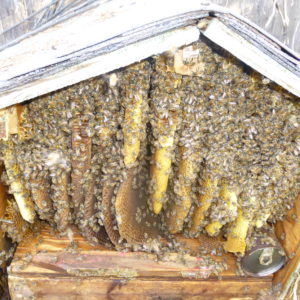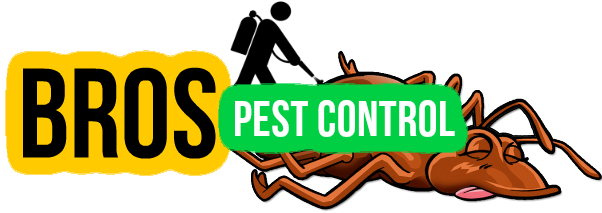Bee Removal Akron, OH | Yellow Jackets, Wasps, Hornets
Akron Bee Control & Extermination
 Bro’s Pest Control specializes in bee removal Akron, OH. Bro’s Pest Control is your connection to safe bee removal and extermination services in the Akron area. Exterminators within our network specialize in: wasp control, hornet control, bee swarm removal and bee removal. Pest control services can also include sealing off the entrances and exits, repairs from hive and damage, as well as traps. Bee’s can pose danger, especially if a loved one is allergic. Contact Bro’s Pest Control today to control your bee problem in the Akron area.
Bro’s Pest Control specializes in bee removal Akron, OH. Bro’s Pest Control is your connection to safe bee removal and extermination services in the Akron area. Exterminators within our network specialize in: wasp control, hornet control, bee swarm removal and bee removal. Pest control services can also include sealing off the entrances and exits, repairs from hive and damage, as well as traps. Bee’s can pose danger, especially if a loved one is allergic. Contact Bro’s Pest Control today to control your bee problem in the Akron area.
For Bee Control Akron, Ohio Call, 1-888-497-9069
Specialized Bee Removal & Extermination
Bro’s Pest Control professionals can help you with all different bee problems including:
 Removal of hives, bee swarm removal, yellow jacket removal, hornet removal, bumble bee removal and various of bee removal jobs. Bee removal Akron, OH experts will come out to your home or business and remove unwanted bee’s safely and at a reasonable price. Same day appointments for bee removal can be scheduled, if needed. Ready for bee control Akron, OH? Contact us today by calling 1-888-497-9069.
Removal of hives, bee swarm removal, yellow jacket removal, hornet removal, bumble bee removal and various of bee removal jobs. Bee removal Akron, OH experts will come out to your home or business and remove unwanted bee’s safely and at a reasonable price. Same day appointments for bee removal can be scheduled, if needed. Ready for bee control Akron, OH? Contact us today by calling 1-888-497-9069.
Bee, Wasp & Hornet Treatment
 Bee, wasp or hornet treatment Akron, OH will require one of our bee specialists to come out to your home to perform a free inspection. They will arrive fully equipped to eliminate your bee issue. The bee exterminator will identify the location of the nest, depending on the type of stinging insect problem you have, and eliminate/remove the problems to protect your family’s health and safety. In the case of a hornets nest, the technician will treat the nest and return to remove it after insuring that all the pests have been killed.
Bee, wasp or hornet treatment Akron, OH will require one of our bee specialists to come out to your home to perform a free inspection. They will arrive fully equipped to eliminate your bee issue. The bee exterminator will identify the location of the nest, depending on the type of stinging insect problem you have, and eliminate/remove the problems to protect your family’s health and safety. In the case of a hornets nest, the technician will treat the nest and return to remove it after insuring that all the pests have been killed.
Bees are flying insects closely related to wasps and ants, known for their role in pollination and, in the case of the best-known bee species, the European honey bee, for producing honey and beeswax. For bee removal Akron, OH — contact us today!
Bee Extermination Akron, Ohio
 Assuming the bee's in question are not honeybee's, a Bro's Pest Control expert can exterminate them. Every year, beekeepers are called upon to give advice regarding the removal of honey bees (and other insect pests) from homes and buildings since honey bees are NOT to be exterminated. Honey Bee removal on the other hand, includes relocating the bee's to a different location. If you have a bumble bee, wasp or yellow jacket bee problem in Akron, OH -- then extermination can be done. For wasp, bumble bee, hornet or yellow jacket extermination Akron, OH -- please get in touch with Bro's Pest Control today!
Assuming the bee's in question are not honeybee's, a Bro's Pest Control expert can exterminate them. Every year, beekeepers are called upon to give advice regarding the removal of honey bees (and other insect pests) from homes and buildings since honey bees are NOT to be exterminated. Honey Bee removal on the other hand, includes relocating the bee's to a different location. If you have a bumble bee, wasp or yellow jacket bee problem in Akron, OH -- then extermination can be done. For wasp, bumble bee, hornet or yellow jacket extermination Akron, OH -- please get in touch with Bro's Pest Control today!
Akron, Ohio
Akron /ˈækrən/ is the fifth-largest city in the U.S. state of Ohio and is the county seat of Summit County. It is located on the western edge of the Glaciated Allegheny Plateau, approximately 39 miles (63 km) south of Lake Erie. As of the 2015 Census Estimate, the city proper had a total population of 197,542, making it the 119th largest city in the United States. The Akron, OH Metropolitan Statistical Area (MSA) covers Summit and Portage counties, and in 2010 had a population of 703,200.[5] It is also part of the larger Cleveland-Akron-Canton, OH Combined Statistical Area, which in 2013 had a population of 3,501,538, ranking 15th. Co-founded along the Little Cuyahoga River in 1825 by Simon Perkins and Paul Williams, it was done so being a strategic point at the summit of the developing Ohio and Erie Canal. The name derived from the Greek word "ἄκρον" signifying a summit or high point. Due to Eliakim Crosby founding "North Akron" (Cascade) in 1833, "South" was added to its name until the two merged into an incorporated village in 1836. Neighboring settlements Kenmore and Ellet became annexed in 1929. It is a setting for several movie films, television shows and novel stories, and is the origin of fictional characters. Residents of the city are called "Akronites". It has had many nicknames, three of which are "Rubber Capital of the World", "Rubber City" and "City of Invention".
Akron became a manufacturing center owing to its location on the canal, as well as being connected to numerous others and railroad lines. With Goodyear, Gojo Industries, FirstEnergy, Huntington Bank (formerly known as FirstMerit Corporation), and Charter Spectrum among its employers, its economy has diversified sectors that include manufacturing, education, healthcare, and biomedical. The city is home to the All-American Soapbox Derby, WGC-Bridgestone Invitational, Stan Hywet Hall and Gardens, Akron City Hospital (known for LeBron James and Stephen Curry), the Goodyear Polymer Center, and Alcoholics Anonymous (AA). It is also the former home of Goodrich, Firestone, General Tire, the National Inventors Hall of Fame, National Marble Tournament, Professional Bowlers Association, Women's Professional Mud Wrestling, and first National Football League Champions the Akron Pros.[6] Listed by Newsweek as one of ten Information Age high tech havens,[7] it was awarded by the National Civic League and National Arbor Day Foundation.[8] Residents Frank and Charles Menches have a disputed claim of inventing the hamburger thus the annual national festival is hosted in the city. A creature often referred to as the Kenmore Grassman is reported through history.
Hornets (insects in the genera Vespa and Provespa) are the largest of the eusocial wasps, and are similar in appearance to their close relatives yellowjackets. Some species can reach up to 5.5 cm (2.2 in) in length. They are distinguished from other vespine wasps by the relatively large top margin of the head and by the rounded segment of the abdomen just behind the waist. Worldwide, there are 22 recognized species of Vespa,[1] and three species of Provespa, which are unique amongst hornets in being nocturnal.[2] Most species only occur in the tropics of Asia, though the European hornet (Vespa crabro), is widely distributed throughout Europe, Russia, North America and Northeast Asia. Wasps native to North America in the genus Dolichovespula are commonly referred to as hornets (e.g. baldfaced hornets), but are actually yellowjackets.
Like other social wasps, hornets build communal nests by chewing wood to make a papery pulp. Each nest has one queen, who lays eggs and is attended by workers who, while genetically female, cannot lay fertile eggs. Most species make exposed nests in trees and shrubs, but some (like Vespa orientalis) build their nests underground or in other cavities. In the tropics, these nests may last year-round, but in temperate areas, the nest dies over the winter, with lone queens hibernating in leaf litter or other insulative material until the spring.
